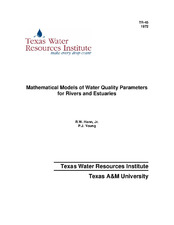| dc.description.abstract | Estuaries represent an economically and biologically important part of our coast. These bodies of water are used as permanent homes or nursery grounds for many of the important forms of marine life. Estuaries also provide protected transportation routes for cargo ships and barges. Because of their biological productivity and their economically advantageous locations, estuaries often attract industrial and commercial development along with associated dense populations.
Because of industrial and metropolitan development, estuaries are often expected to accept large amounts of waste materials. Many estuaries are large in size and give the appearance of being able to assimilate large volumes of this waste material. In actuality, estuaries may act as natural traps for pollutants. The fresh-water flow into some estuaries is relatively small. Once a pollutant enters such an estuary, the material is carried back and forth by the tides and makes only slow progress toward the ocean. These conditions are especially characteristic of Gulf Coast estuaries. For example, recent studies (92) indicate that the average flushing time (i.e., the time necessary for the volume of fresh water inflow to equal the volume of the estuary) for the upper 14 miles of the Houston Ship Channel is 26 days and the average flushing time for Galveston Bay is 155 days.
In regard to salinity, estuaries vary between two extremes: the homogeneous estuary and the highly stratified. At each section of a homogeneous estuary, there is complete vertical mixing of the salt and fresh water. In a stratified estuary, there are two layers of water: the upper layer contains fresh water flowing toward the sea, and the lower layer contains salt water moving away from the sea. A sharp change in salinity occurs at the interface between the upper and lower layers. The Delaware Estuary is representative of a homogeneous estuary, whereas the Mississippi Delta represents a highly stratified estuary. Many estuaries fall somewhere between these two extremes and include some mixing and some stratification at each section; hence, they are more difficult to analyze than the idealized homogeneous or stratified cases. The Houston Ship Channel is an example of a partially stratified estuary. A comprehensive discussion of the characteristics of these types of estuaries is available in Ippen (51). | en |


